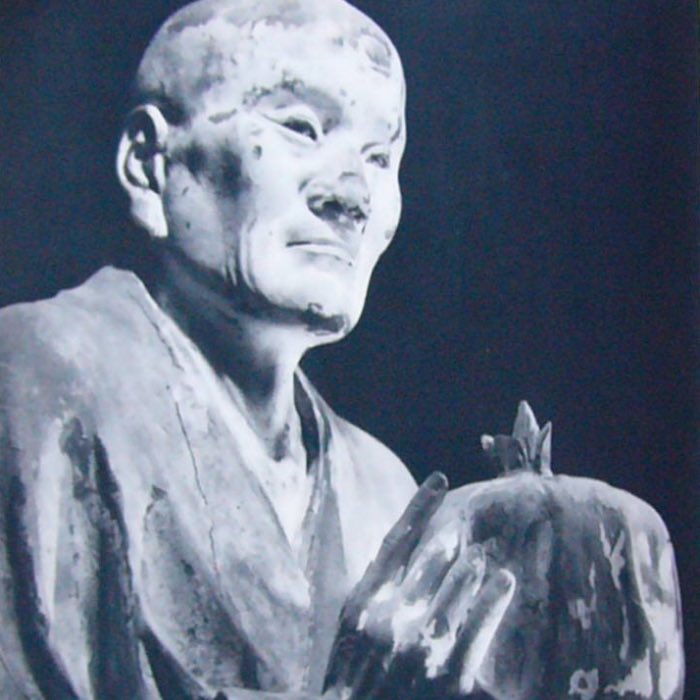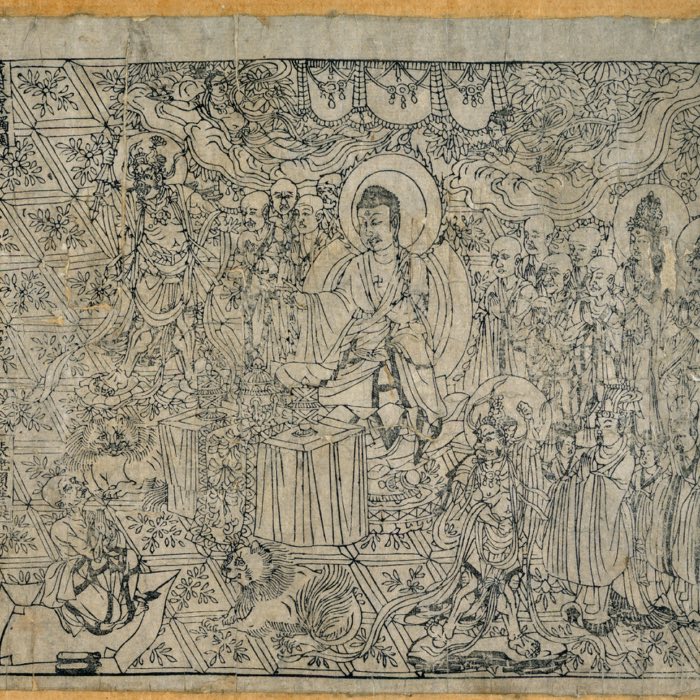Weekend Stories
I enjoy going exploring on weekends (mostly). Here is a collection of stories and photos I gather along the way. All posts are CC BY-NC-SA licensed unless otherwise stated. Feel free to share, remix, and adapt the content as long as you give appropriate credit and distribute your contributions under the same license.
diary · tags · RSS · Mastodon · flickr · simple view · grid view · page 11/50
Zen Buddhism: Overview of its historical and philosophical roots
Zen Buddhism is frequently portrayed in modern popular culture as a set of cryptic sayings, minimalist aesthetics, and serene meditation gardens. However, these representations often isolate Zen from its deeper philosophical and historical foundations. Contrary to such portrayals, Zen is not an isolated or esoteric tradition detached from Buddhist roots. Rather, it is a school within Mahāyāna Buddhism, one that emphasizes direct experiential realization of the foundational teachings first articulated by Siddhartha Gautama and later refined in Mahāyāna thought, particularly through the Madhyamaka and Huayan traditions. This post marks the beginning of a new series exploring Zen Buddhism as a tradition deeply rooted in classical and Mahāyāna Buddhist thought. The first post in this series offers a contextual and philosophical overview of Zen Buddhism as a historically continuous development within the broader framework of Buddhist philosophy. It focuses on Zen’s unique interpretative lens, its roots in early Indian thought, and its evolution through Chinese, Korean, Japanese and Vietnamese cultures.
Yogācāra and the nature of mind — Consciousness-only and the path to non-duality
After Nāgārjuna’s radical deconstruction of all views through śūnyatā and the two truths, Buddhist philosophy faced a new challenge: how to speak meaningfully about experience and practice without slipping back into metaphysical reification. The Yogācāra school, also known as Cittamātra (‘Mind-only’), emerged in response. Rather than opposing Nāgārjuna, Yogācāra complements his insights by turning from the negation of essence to an exploration of consciousness as the medium through which all experience arises. Yogācāra does not argue that everything is mental in the idealist sense; rather, it shows how our experience of reality is inextricably shaped by mental processes — and how liberation depends on transforming consciousness itself. In this post, we explore the core teachings of Yogācāra, its relation to Madhyamaka, and how it offers a vital bridge between analytical emptiness and the non-dual immediacy of Zen.
Asaṅga and Vasubandhu: Synthesizing Yogācāra thought
Asaṅga and Vasubandhu are two of the most influential thinkers in the history of Mahāyāna Buddhism, renowned for their foundational role in developing the Yogācāra, or ‘Consciousness-Only’, school. Working in the 4th and 5th centuries CE, these brothers synthesized philosophical analysis, meditative insight, and ethical reflection to create a comprehensive vision of how consciousness shapes experience and how liberation is possible. In this post, we explore their lives, core doctrines, and the lasting impact of their thought on Buddhist philosophy in India, East Asia, and beyond.
The Awakening of Faith in the Mahāyāna: Unifying mind and suchness
The Awakening of Faith in the Mahāyāna is a foundational text in East Asian Buddhism, renowned for its profound synthesis of Indian Mahāyāna doctrines and Chinese philosophical concerns. Traditionally attributed to Aśvaghoṣa but now widely regarded as a 6th-century Chinese composition, the text played a crucial role in shaping the doctrinal landscape of Chinese, Korean, and Japanese Buddhism. By articulating the concept of the ‘One Mind’ with its dual aspects of suchness and arising-and-ceasing, it offers a powerful framework for reconciling emptiness, Buddha-nature, and the process of awakening. In this article, we explore the origins, core teachings, and far-reaching influence of The Awakening of Faith, highlighting its significance as a bridge between philosophy and practice in the Mahāyāna tradition.
Prajñāpāramitā literature and the language of emptiness
The Prajñāpāramitā literature stands at the heart of Mahāyāna Buddhism, introducing the radical and transformative concept of emptiness (śūnyatā) and redefining wisdom (prajñā) as direct, non-conceptual insight into the nature of reality. Composed between the 1st century BCE and the early centuries CE, these texts challenged established Buddhist doctrines and inspired new currents of philosophical and meditative practice. In this post, we explore the origins, core themes, and far-reaching influence of the Prajñāpāramitā sūtras, highlighting their role in shaping the language, thought, and spiritual aspirations of Mahāyāna traditions across Asia.
Nāgārjuna and the limits of conceptual thought: The unbinding of thought in Madhyamaka and its resonance in Zen
Nāgārjuna’s Madhyamaka school stands as one of the most radical developments in Buddhist philosophy. While often appreciated for its logical rigor and conceptual deconstruction, its deeper function is therapeutic: to unmask the limits of thought and free the mind from all views — including the view of emptiness itself. This method, known as prasaṅga, forms the philosophical heart of the apophatic tradition in Buddhism. It clears the way for a mode of knowing that transcends discursive reasoning and opens into direct, wordless experience. This posts explores the apophatic logic of Nāgārjuna, its impact on Buddhist soteriology, and its resonance with Zen’s preference for silence, paradox, and meditative immediacy.
Interpenetration and the mirror of reality — From Dependent Origination to Huayan thought
Emptiness (śūnyatā) lies at the heart of Mahāyāna philosophy. Nāgārjuna’s great insight — that all dharmas are empty because they arise dependently — served as a profound antidote to metaphysical essentialism. But emptiness is not an end in itself. It points beyond fixed views not to nihilism, but to a deeper vision of relational reality. What happens when we follow this insight all the way through? In this post, we explore that question by tracing the evolution from Nāgārjuna’s analytic clarity to the luminous vision of interpenetration developed in the Huayan school. From negation of self-nature to affirmation of mutual presence — we follow the path from emptiness to its flowering as totality.
Śūnyatā and the Two Truths: Nāgārjuna’s Madhyamaka philosophy
Nāgārjuna’s teaching of śūnyatā (emptiness) and the two truths forms the heart of his Madhyamaka philosophy — a vision that dismantles the illusion of intrinsic essence and affirms the interdependent, provisional nature of all phenomena. Far from promoting nihilism, his thought clarifies how emptiness allows for meaningful action and compassionate engagement. By distinguishing between conventional and ultimate truth, Nāgārjuna shows that we can function in the world without mistaking our concepts and identities for fixed realities. This insight has not only shaped Mahāyāna philosophy but also profoundly influenced Zen Buddhism, where the lived realization of emptiness becomes the ground for clarity, freedom, and care.
Nāgārjuna and his role in the development of Buddhist philosophy
The Indian philosopher Nāgārjuna, active between the second and third centuries CE, is regarded as one of the most influential figures in the history of Buddhist thought. He is widely recognized as the founder of the Madhyamaka school, or the ‘Middle Way’ school of Mahayana Buddhism. His works, especially the Mūlamadhyamakakārikā (Fundamental Verses on the Middle Way), are considered profound philosophical contributions that have shaped the development of Buddhist theory and practice for centuries. This influence, however, is not to be understood as a deviation or radical departure from the original teachings of Siddhartha Gautama, but rather as a clarification and deepening of the core principles already present in early Buddhism. Nāgārjuna’s efforts can be viewed as a systematic defense of dependent origination (pratītyasamutpāda), non-self (anattā), and the rejection of essentialism — concepts foundational to Siddhartha’s philosophy.
Going beyond the teachings: Buddhism as a path of transformation
Within the wide-ranging traditions of Buddhist philosophy and practice, a recurring theme emerges that challenges the role of doctrine itself: the idea that the teachings are not absolute truths but provisional tools. This concept appears repeatedly across Buddhist schools, yet it becomes especially central in the Madhyamaka philosophy of Nagarjuna and in the Zen tradition, both of which insist that the essence of Buddhism is not a doctrine to be grasped intellectually, but a transformation in one’s mode of being and perception. In this post, we examine the notion that Buddhism ultimately transcends its own conceptual framework, pointing instead to a kind of inner realization that is lived rather than explained.









